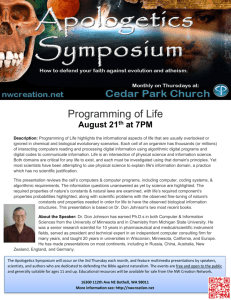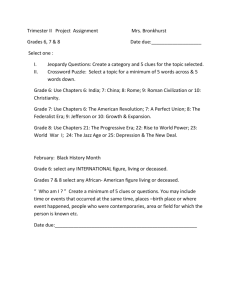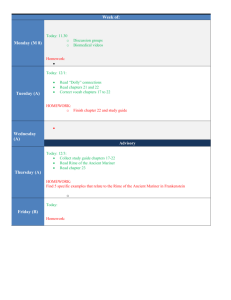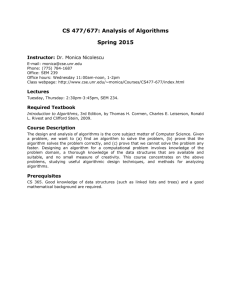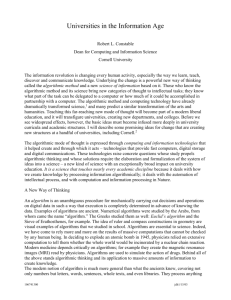Word-Document
advertisement
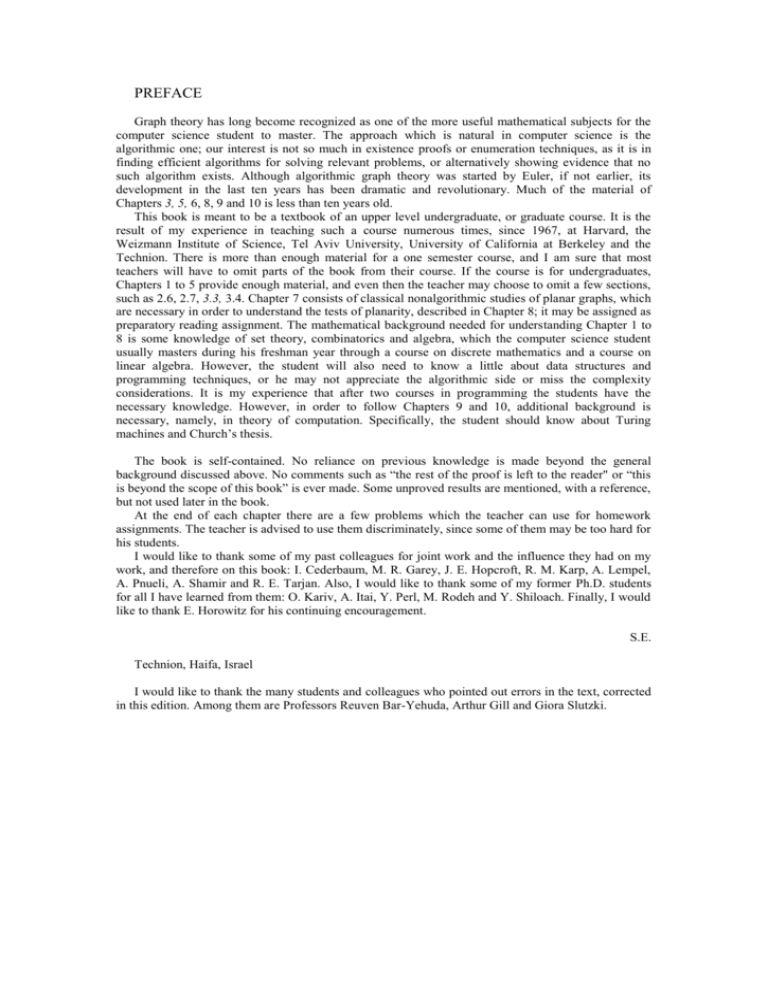
PREFACE Graph theory has long become recognized as one of the more useful mathematical subjects for the computer science student to master. The approach which is natural in computer science is the algorithmic one; our interest is not so much in existence proofs or enumeration techniques, as it is in finding efficient algorithms for solving relevant problems, or alternatively showing evidence that no such algorithm exists. Although algorithmic graph theory was started by Euler, if not earlier, its development in the last ten years has been dramatic and revolutionary. Much of the material of Chapters 3, 5, 6, 8, 9 and 10 is less than ten years old. This book is meant to be a textbook of an upper level undergraduate, or graduate course. It is the result of my experience in teaching such a course numerous times, since 1967, at Harvard, the Weizmann Institute of Science, Tel Aviv University, University of California at Berkeley and the Technion. There is more than enough material for a one semester course, and I am sure that most teachers will have to omit parts of the book from their course. If the course is for undergraduates, Chapters 1 to 5 provide enough material, and even then the teacher may choose to omit a few sections, such as 2.6, 2.7, 3.3, 3.4. Chapter 7 consists of classical nonalgorithmic studies of planar graphs, which are necessary in order to understand the tests of planarity, described in Chapter 8; it may be assigned as preparatory reading assignment. The mathematical background needed for understanding Chapter 1 to 8 is some knowledge of set theory, combinatorics and algebra, which the computer science student usually masters during his freshman year through a course on discrete mathematics and a course on linear algebra. However, the student will also need to know a little about data structures and programming techniques, or he may not appreciate the algorithmic side or miss the complexity considerations. It is my experience that after two courses in programming the students have the necessary knowledge. However, in order to follow Chapters 9 and 10, additional background is necessary, namely, in theory of computation. Specifically, the student should know about Turing machines and Church’s thesis. The book is self-contained. No reliance on previous knowledge is made beyond the general background discussed above. No comments such as “the rest of the proof is left to the reader" or “this is beyond the scope of this book” is ever made. Some unproved results are mentioned, with a reference, but not used later in the book. At the end of each chapter there are a few problems which the teacher can use for homework assignments. The teacher is advised to use them discriminately, since some of them may be too hard for his students. I would like to thank some of my past colleagues for joint work and the influence they had on my work, and therefore on this book: I. Cederbaum, M. R. Garey, J. E. Hopcroft, R. M. Karp, A. Lempel, A. Pnueli, A. Shamir and R. E. Tarjan. Also, I would like to thank some of my former Ph.D. students for all I have learned from them: O. Kariv, A. Itai, Y. Perl, M. Rodeh and Y. Shiloach. Finally, I would like to thank E. Horowitz for his continuing encouragement. S.E. Technion, Haifa, Israel I would like to thank the many students and colleagues who pointed out errors in the text, corrected in this edition. Among them are Professors Reuven Bar-Yehuda, Arthur Gill and Giora Slutzki.





